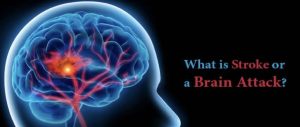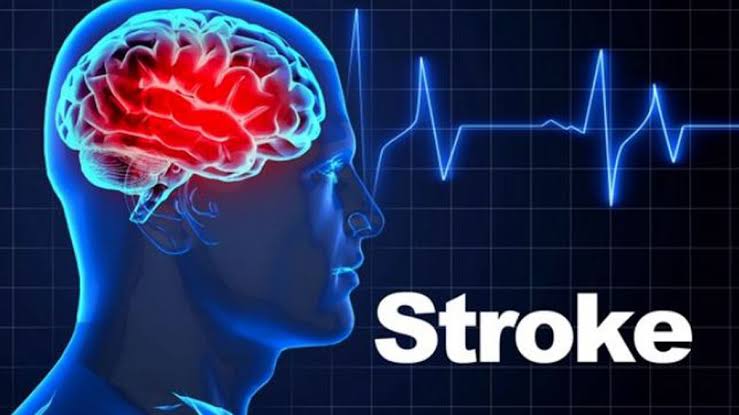As I lay in the hospital bed, I couldn’t move, couldn’t speak, couldn’t even blink. The world around me was a blur, a distant hum of beeping machines and muffled voices. They called it a “Brain Storm”, a stroke that had ravaged my mind and body, leaving me a shell of my former self. But I knew I was still in there, trapped and fighting to break free.
Days turned into weeks, and weeks turned into months. Slowly, agonizingly slowly, I began to reclaim my body, my voice, my life. The storm in my brain slowly subsided, revealing a new landscape, scarred but still beautiful. I learned to walk again, to speak again, to live again. And with each small victory, a spark of hope grew, a flame that burned brighter with every passing day.
Now, I stand tall, a survivor of the “Brain Storm” that tried to destroy me. I look out at the world with new eyes, a world full of possibilities and promise. I know that no matter what life throws at me, I can weather the storm, emerge stronger and more resilient than before. My story is one of hope and inspiration, a reminder that no matter how dark the night, the sun will always rise again, brighter and more beautiful than ever.
What is Stroke?

A stroke, also known as a cerebrovascular accident (CVA), is a medical condition that occurs when the blood supply to the brain is interrupted or reduced, depriving the brain of oxygen and nutrients. This can cause damage to the brain tissue and lead to a range of symptoms and potential long-term effects.
There are three main types of stroke:
1. Ischemic stroke: This is the most common type, accounting for about 87% of all strokes. It occurs when a blood vessel in the brain becomes blocked, reducing blood flow.
2. Hemorrhagic stroke: This type occurs when a blood vessel in the brain ruptures, causing bleeding in the brain.
3. Transient ischemic attack (TIA) or “mini-stroke”: This is a temporary blockage of a blood vessel that lasts for a short time, usually less than 24 hours.
Causes
•Blocked artery in the brain: This type of stroke is called an ischemic stroke and is the most common type, making up about 85% of all strokes. It occurs when a blood clot blocks or plugs an artery leading to the brain, often caused by a buildup of plaques, known as atherosclerosis.
– Leaking or bursting of a blood vessel in the brain: This type of stroke is called a hemorrhagic stroke. It occurs when a blood vessel in the brain leaks or ruptures, causing bleeding in the brain. The increased pressure from the blood can damage surrounding brain cells.
Risk Factors
1. High blood pressure
2. Heart disease
3. Diabetes
4. Smoking
5. High cholesterol and lipids
6. Lack of exercise
7. Obesity
8. Excessive alcohol consumption
9. Illegal drug use
10. Abnormal heart rhythm
11. Cardiac structural abnormalities
12. Older age
13. Race (African Americans, Hispanics, and Asians are at higher risk)
14. Gender (men are at higher risk, but women are more likely to die from stroke)
15. History of prior stroke
16. Family history or heredity
17. Where you live (stroke risk varies by region and country)
18. Social and economic factors (low income, limited access to healthcare)
19. High red blood cell count
20. Sleep apnea
It’s important to note that some of these risk factors can be managed or changed, while others cannot. By controlling the risk factors that can be changed, individuals can reduce their overall risk of having a stroke.
Signs and Symptoms
1. Sudden weakness or numbness in the face, arm, or leg
2. Sudden confusion or trouble speaking or understanding speech
3. Sudden trouble seeing in one or both eyes
4. Sudden severe headache with no known cause
5. Sudden trouble walking, dizziness, or loss of balance
6. Sudden nausea or vomiting
7. Sudden drooping of the face, arm, or leg
8. Sudden difficulty swallowing
9. Sudden slurred speech
10. Sudden loss of coordination or balance
11. Sudden difficulty seeing in bright light
12. Sudden double vision or blurred vision
13. Sudden loss of sensation in the face, arm, or leg
14. Sudden difficulty moving the arm or leg
15. Sudden difficulty speaking or understanding speech
16. Sudden loss of consciousness
17. Sudden seizures
18. Sudden difficulty breathing
19. Sudden pale or blue-tinged skin
20. Sudden rapid heartbeat
Remember the acronym FAST to recognize the signs of a stroke:
F – Face: Ask the person to smile. Does one side of their face droop?
A – Arm: Ask the person to raise both arms. Does one arm drift downward?
S – Speech: Ask the person to repeat a simple sentence. Is their speech slurred or difficult to understand?
T – Time: Time is of the essence. Call for emergency medical services immediately if you observe any of these signs.
Prevention
1. Manage blood pressure: Keep it under control through medication, diet, and exercise.
2. Exercise regularly: Aim for at least 30 minutes of physical activity daily.
3. Eat a healthy diet: Focus on fruits, vegetables, whole grains, and lean proteins.
4. Maintain a healthy weight: Reduce your risk by losing weight if you’re overweight or obese.
5. Don’t smoke: Quit smoking and avoid secondhand smoke.
6. Limit alcohol consumption: Excessive drinking can increase your risk.
7. Manage diabetes: Keep your blood sugar levels under control.
8. Reduce stress: Engage in stress-reducing activities like meditation or yoga.
9. Get enough sleep: Aim for 7-8 hours of sleep per night.
10. Stay hydrated: Drink plenty of water throughout the day.
11. Limit sodium intake: Aim for less than 2,300 milligrams per day.
12. Increase potassium intake: Include potassium-rich foods like bananas and leafy greens in your diet.
13. Get regular check-ups: Monitor your blood pressure, cholesterol, and blood sugar levels.
14. Manage stress: Engage in stress-reducing activities like meditation or yoga.
15. Get enough physical activity: Aim for at least 30 minutes of moderate-intensity exercise per day.
16. Reduce sedentary behavior: Take regular breaks to move around and stretch.
17. Improve mental health: Seek help if you’re struggling with depression or anxiety.
18. Get enough vitamin D: Maintain adequate levels through sun exposure, supplements, or fortified foods.
19. Limit processed foods: Focus on whole, unprocessed foods to reduce your risk.
20. Stay informed: Educate yourself on stroke risk factors and symptoms.
The treatment and management of stroke typically involve a multidisciplinary approach, including:
1. Emergency medical services: Rapid transportation to a hospital and initial assessment.
2. Acute care: Stabilization, oxygen therapy, and management of blood pressure, blood sugar, and body temperature.
3. In Clot-busting drugs like tPA (tissue plasminogen activator) to restore blood flow.
4. Endovascular procedures: Minimally invasive procedures like angioplasty and stenting to open blocked vessels.
5. Surgery: Craniotomy or craniectomy to relieve pressure, remove blood clots, or repair blood vessels.
6. Rehabilitation: Physical, occupational, speech, and cognitive therapy to regain lost function and independence.
7. Medications: To manage stroke-related conditions like high blood pressure, diabetes, and high cholesterol.
8. Lifestyle modifications: Healthy diet, regular exercise, stress management, and smoking cessation.
9. Supportive care: Management of complications like pain, spasticity, and depression.
10. Follow-up care: Regular check-ups with a healthcare provider to monitor progress and adjust treatment plans as needed.
The goal of stroke treatment and management is to:
– Minimize brain damage
– Restore function and independence
– Prevent future strokes
– Improve quality of life
It’s important to note that the most effective treatment for stroke is prompt medical attention, so it’s crucial to recognize the signs of stroke and act F.A.S.T. (Face, Arm, Speech, Time).

